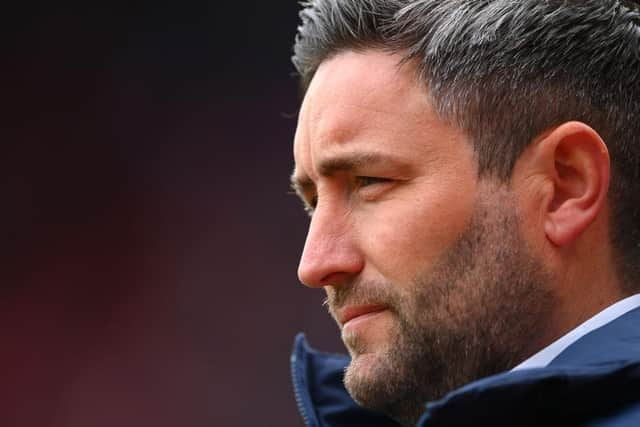European talent and impressive loan deals: Inside Lee Johnson's transfer blueprint ahead of transformative Sunderland window
and live on Freeview channel 276
The club’s recruitment team – including sporting director Kristjaan Speakman and recruitment chief Stuart Harvey – are already sifting through targets ahead of a big window.
And while the onus won’t be purely on head coach Lee Johnson to identify potential signings, he too will play a key role in the recruitment process.
Advertisement
Hide AdAdvertisement
Hide AdIt is worth, therefore, casting an eye back and looking at how the Sunderland boss has fared in the transfer market previously before and the trends he tends to follow.


So what could we expect from Johnson and the Black Cats this summer? We take a look:
A LOOK OVERSEAS
During his time at Oldham Athletic, Barnsley and Bristol City, Johnson certainly hasn’t been shy in taking a look at leagues overseas in a bid to bolster his squad.
It’s a market Sunderland haven’t really exploited during their time in League One - with the obvious exception of Arbenit Xhemajli - but one which could become a key generator of potential transfer targets under the new structure and head coach.
Advertisement
Hide AdAdvertisement
Hide AdJohnson’s forays overseas have, like those of any manager, been somewhat mixed.
During his time at Oldham, Dutch midfielder Sidney Schmeltz and Latvian defender Edjis Joksts failed to make a material impact in the English game.
But other unproven quantities, such as French midfielder Timothee Dieng, have gone on to have strong careers in the lower reaches of the EFL after being brought to the country by Johnson during his time at Boundary Park.
Johnson continued to monitor the European market when he moved to Barnsley and latterly Bristol City - and had some real success stories at Ashton Gate when it came to recruiting from overseas.
Advertisement
Hide AdAdvertisement
Hide AdHordur Magnusson was an eye-catching signing from Juventus, who was subsequently sold for a profit to CSKA Moscow.
Likewise, the signings of Famara Diedhiou and Niclas Eliasson proved good business - the former still impressing for the Robins in the Championship, with the latter sold for a strong profit.
And while it’s important to again note that not every signing from overseas was an unparalleled success, Johnson does seem to have a knack of identifying players who can provide a short-term impact and deliver a profit in the long-term.
MONEY MATTERS
That leads us nicely into our next point.
Johnson certainly isn’t afraid to splash the cash on a player that he feels can improve his squad.
But this is done on a really strategic basis.
Advertisement
Hide AdAdvertisement
Hide AdIf you take a look at Johnson’s time at Bristol City, where some substantial fees were spent on a number of players, there are some key trends.
All those signed for a fee were under 30, the vast majority under 25, and therefore all had the potential to be sold on for a profit in the future.
You don’t have to look far for success stories, either.
The likes of Adam Webster and Josh Brownhill are now playing in the Premier League having been signed by Johnson, and then sold-on for a profit.
When the head coach looks for experience, he tends to scour the free agent market - as evidenced by the captures of Gary O’Neil, Ashley Williams and others during his stint in the South West.
When fees are spent, it’s with the longer-term in mind.
DIPS NORTH OF THE BORDER AND INTO NON-LEAGUE
Advertisement
Hide AdAdvertisement
Hide AdWhile the European market is one that has been of interest to Johnson in the past, he isn’t adverse to looking closer to home either.
And that includes scouring the non-league scene for players with potential.
At Barnsley and Bristol City in particular, Johnson wasn’t shy in bringing non-league players into the club if he felt they had scope to grow.
While not all have proven astute captures, a number have.
Stefan Payne and Marc Roberts, both signed at Barnsley, have gone on to forge strong careers in the EFL - with the latter still a regular at Championship side Birmingham City.
Advertisement
Hide AdAdvertisement
Hide AdScotland has also proven a happy hunting ground for Johnson too, with the likes of Marley Watkins making their mark after being lured south of the border by the head coach.
More recently, of course, we have seen the addition of Ross Stewart at Sunderland.
This could be an interesting market for the Wearsiders to consider further, particularly given their geographical location.
UTILISING THE LOAN MARKET
This is perhaps the a pertinent point given Lincoln City, Blackpool and others have showed this season just how key the loan market can be in League One.
Advertisement
Hide AdAdvertisement
Hide AdAnd it’s an area Johnson has plenty of experience in, having used the loan market to great effect at his former clubs.
It was perhaps his loan business at Bristol City that caught the eye the most - where the likes of Tammy Abraham, Benik Afobe, Kasey Palmer, Jay Dasilva and Tamas Kalas were all signed on temporary deals.
Interestingly, the final three names on that list all subsequently made their stays at Ashton Gate permanent ones.
At Oldham, too, Johnson signed the likes of Joseph Mills on a permanent deal after he impressed on loan.
Advertisement
Hide AdAdvertisement
Hide AdAgain, it’s important to stress that not every loan signing made by the 39-year-old has been a success - but he does have a strong track record when it comes to loan signings making an impact in the short and long-term.
So while some of Sunderland’s signings in the summer window may be temporary to begin with, Johnson may have a longer-term vision in mind if his previous work in the window is anything to go by.